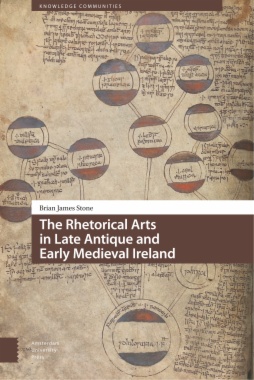The Rhetorical Arts in Late Antique and Early Medieval Ireland represents the first study of the art of rhetoric in medieval Ireland, a culture often neglected by medieval rhetorical studies. In a series of three case studies, Brian James Stone traces the textual transmission of rhetorical theories and practices from the late Roman period to those early Irish monastic communities who would not only preserve and pass on the light of learning, but adapt an ancient tradition to their own cultural needs, contributing to the history of rhetoric in important ways. The manuscript tradition of early Ireland, which gave us the largest body of vernacular literature in the medieval period and is already appreciated for its literary contributions, is also a site of rhetorical innovation and creative practice.
- Cover
- Table of Contents
- Acknowledgements
- Introduction: Early Irish Rhetoric
- Ireland and the Roman Frontiers
- Historiography and Medieval Rhetoric
- A Note on Periodization
- 1. Late Antique and Early Medieval Ireland and the Latin West
- Social and Ecclesiastical Organization in Early Ireland
- 2. Learning in Ireland in the Sixth through the Eighth Centuries
- Ireland and Anglo-Saxon England
- Ireland and Spain
- Letter Writing and the Paschal Controversy
- Columbanus
- Learning at Iona
- The Grammatical Handbook Tradition in Ireland
- 3. St Patrick and the Rhetoric of Epistolography
- The Historical Context of Patrick’s Mission to Ireland
- The Dating of Patrick’s Obit
- Rhetoric of Epistolography
- Patrick’s Learning
- The Purpose of Patrick’s Mission
- 4. A Rhetorical Analysis of Patrick’s Epistola ad Milites Coroticus
- 5. The Hisperica famina
- Rhetorical Analysis of Hisperica famina
- 6. Secular Learning and Native Traditions
- Filidecht and Secular and Church Relations
- Verbal Art and Early Irish Poetry – ‘The Cauldron of Poetry and Learning’
- The Cauldron
- ‘The Cauldron of Poetry and Learning’ and The Trivium of the Liberal Arts
- Conclusion and Considerations for Further Study
- Bibliography
- Primary Sources
- Secondary Sources
- Index

